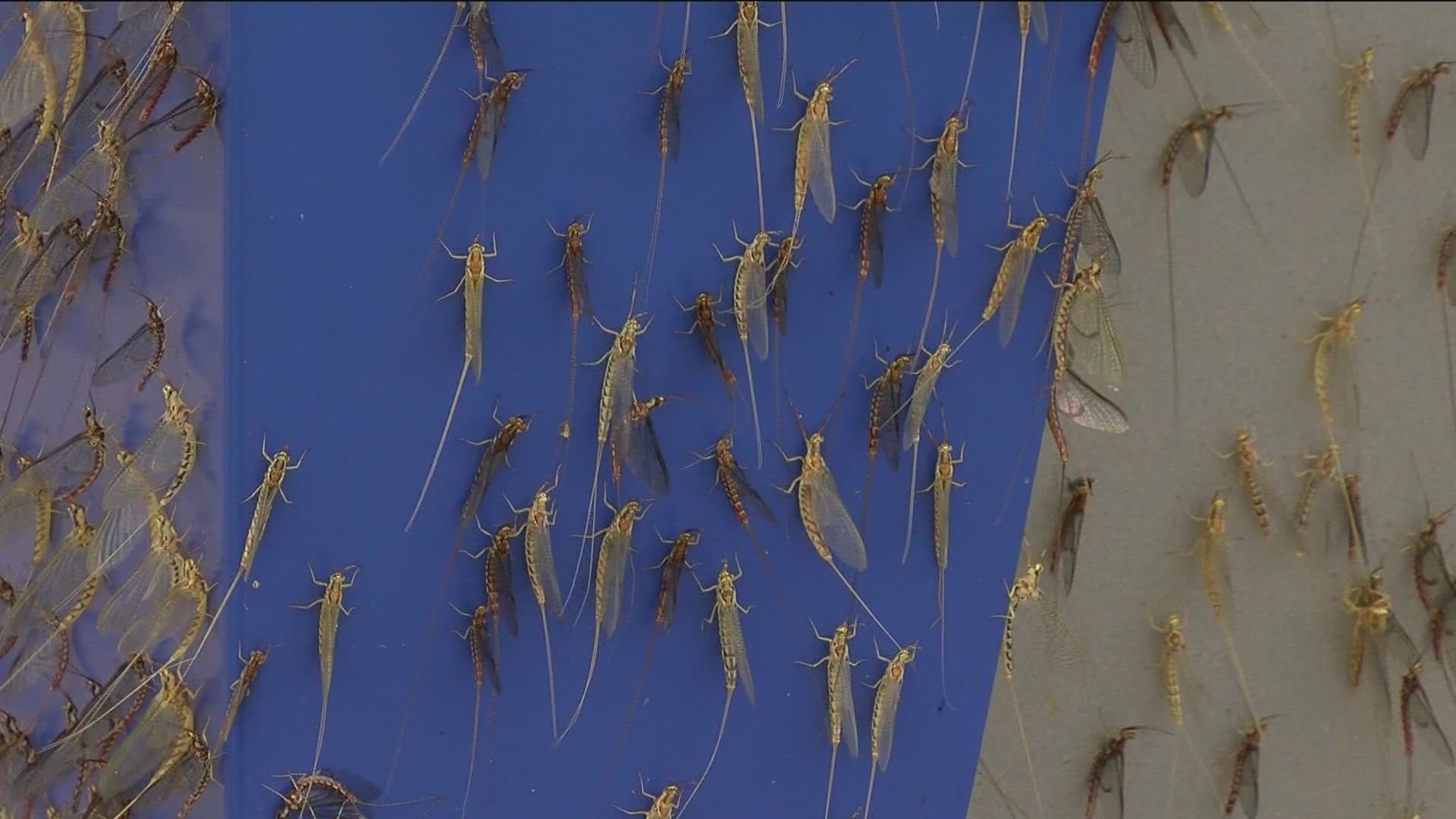TOLEDO, Ohio — Editor's note: The above video is from earlier coverage that aired on June 21, 2022.
If you live near Lake Erie and the upper Maumee River, you know what May (and June and July) mean: mayflies. Lots and lots of mayflies.
Maybe you don't mind them, or maybe you think they're downright gross, but the critters are difficult to ignore. People living near bodies of freshwater worldwide bear annual witness as mayflies amass under street lights, absolutely blanket cars and coat any available surface they can find.
The life of the mayfly is a tragic one. According to MayflyNews, which yes, is a real website about all things mayfly and Lake Erie, the insects spend one to two years as a nymph at the bottom of Lake Erie, tucked safely away in the mud.
Even the carefree days of childhood must come to an end for the mayfly. Putting away their mayfly toys, they bust out a pair of wings and enter the subimagos phase of life, which kicks off in mid-June to early July in northwest Ohio. In other regions with different species, this can occur earlier or later.
Mayflies do this in swarms as an adaptive strategy to increase reproductive success. Even the most starving flock of seagulls couldn't possibly eat that many mayflies.

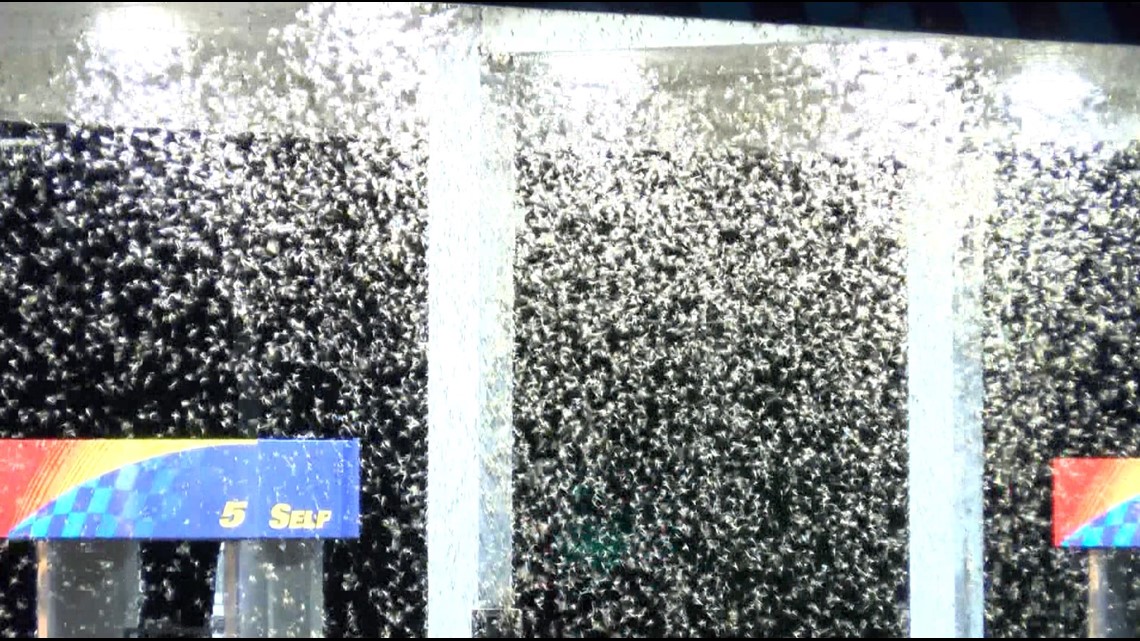
Speaking of food, mayflies don't even have working mouths, just vestigial mouthparts, meaning they can't eat and (better yet) they don't bite.
But adult mayflies don't really need food. Why is that? Here comes the truly tragic part (if you're a mayfly): depending on the species, mayflies live between a few short, bittersweet minutes and as long as an agonizing 72 hours.
It's an incredibly short adulthood, but fortunately there isn't a lot on a mayfly's to-do list. There's just not enough time for a mayfly to find a fulfilling career or contemplate the meaning of their ephemeral lives; instead, they accomplish the singular task of reproducing.


After they mate, female mayflies lay between a few hundred and several thousand eggs in the water, where new nymphs will develop, continuing the reproductive cycle.
This important task does not stop them from accepting an open invitation to land on every available surface, including the WTOL 11 parking lot.

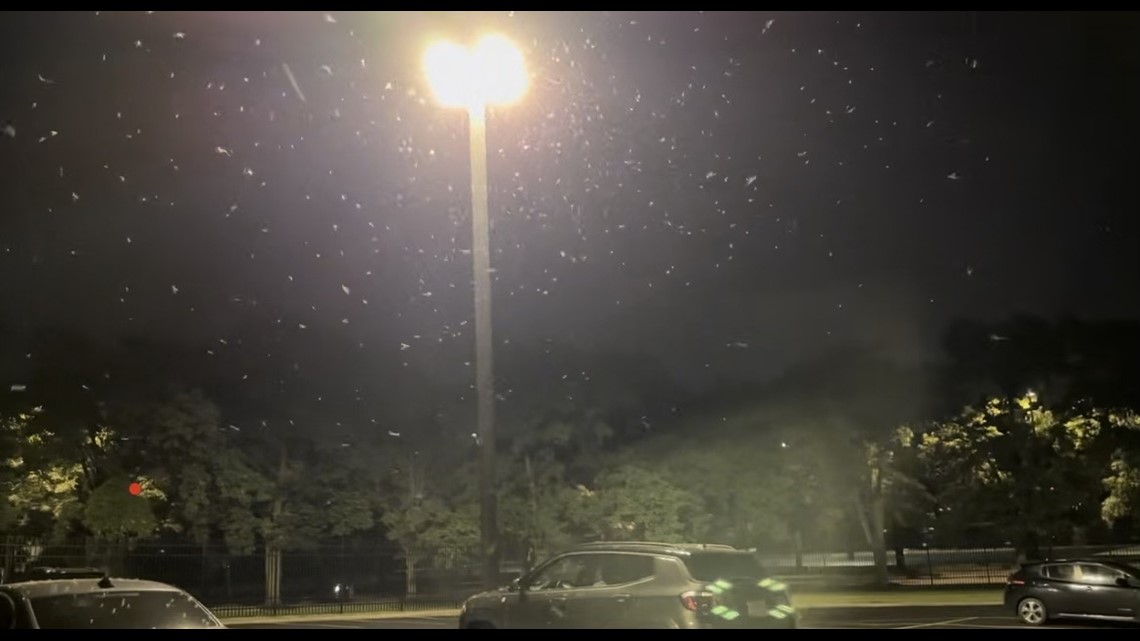


Mayflies might be annoying and creepy, but they don't pose any threat to humans, animals or agriculture. In fact, the massive number of mayflies is actually an indication that Lake Erie is healthy and clean: the little guys are very sensitive to pollution. That they continue to come out in droves is a good sign, according to ecologists.

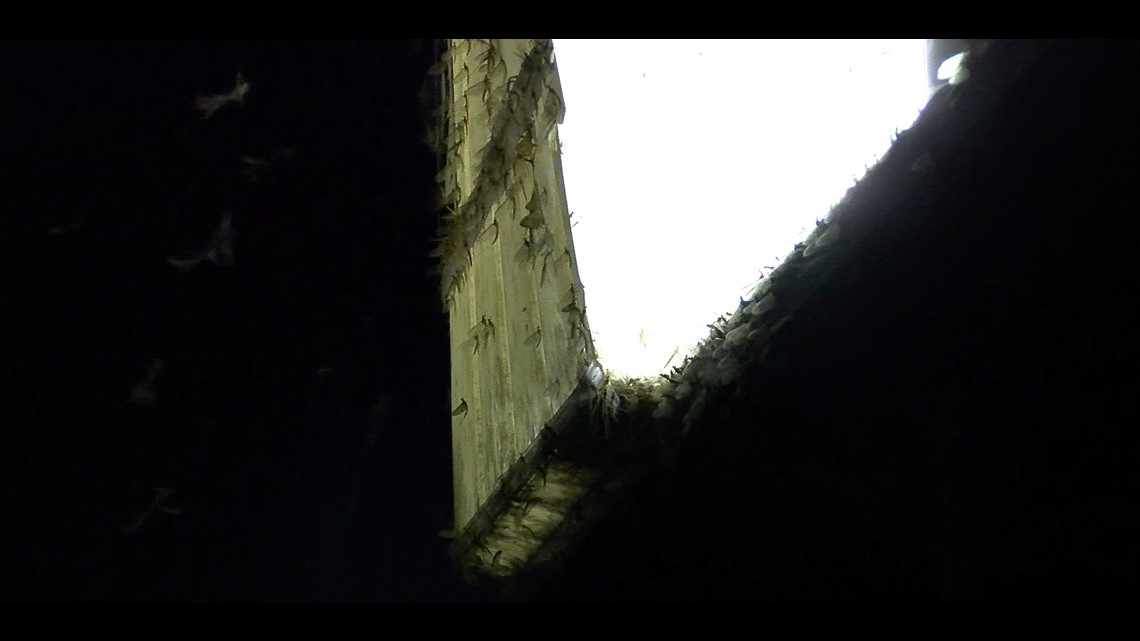
Those who live along Lake Erie have learned to live somewhat peacefully with their winged compatriots, some even making light of it. A beloved local Point Place eatery, Mayfly Tavern, derives its name from the insects that come to coat the outside of the building.


And on N. Summit Street, mayflies have no problem spending their few remaining hours sunbathing on your cars, whose inanimation allows them to, unlike humans, remain unperturbed and composed while insects coat their wheel wells like a bedazzled hubcap.

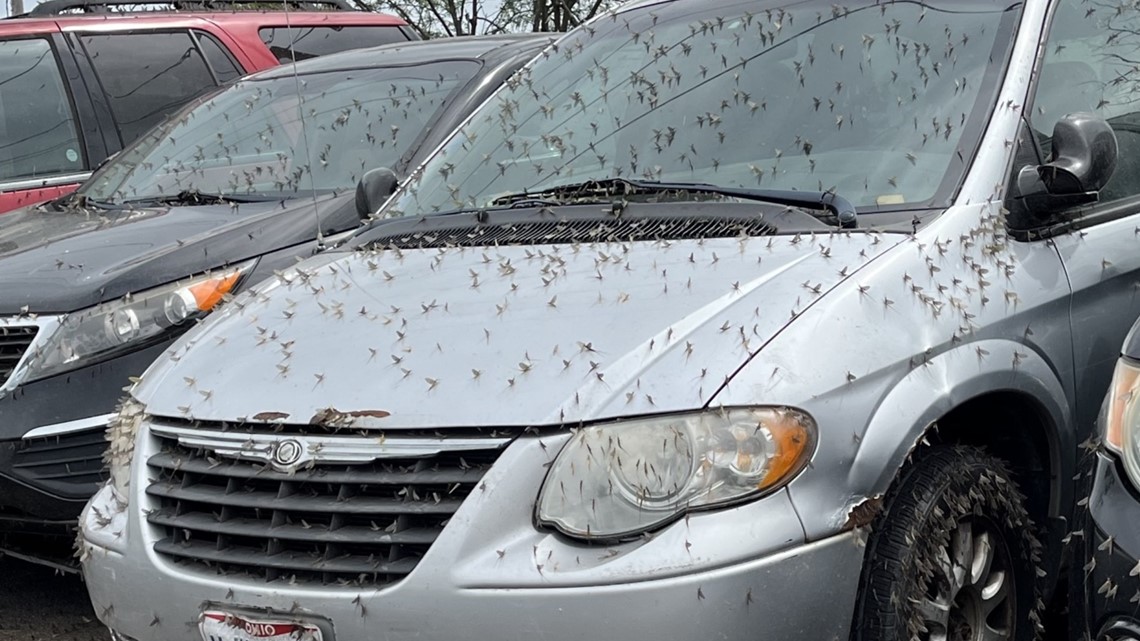
Mayflies have been spotted this year as far as west Toledo: a WTOL 11 employee snapped this photo of mayflies covering the walls and sidewalk at a gym between Douglas and Secor.

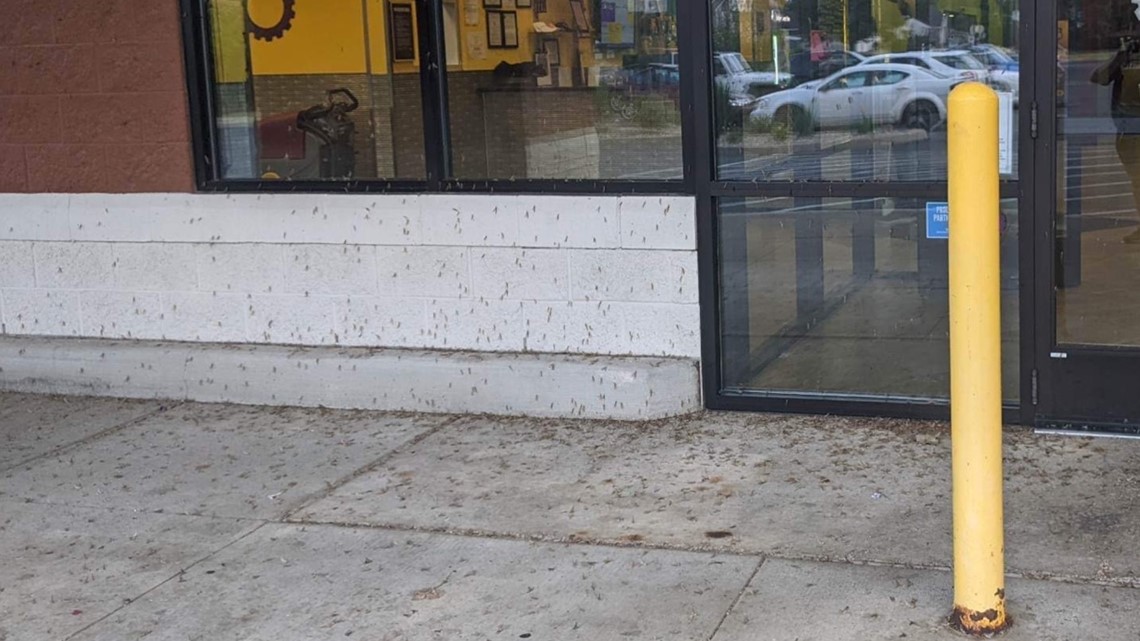
Getting the heebie-jeebies just thinking about all these bugs that swarm so densely they appear on radar? Turn off your lights outside at night. That will reduce (some of) their numbers come morning.

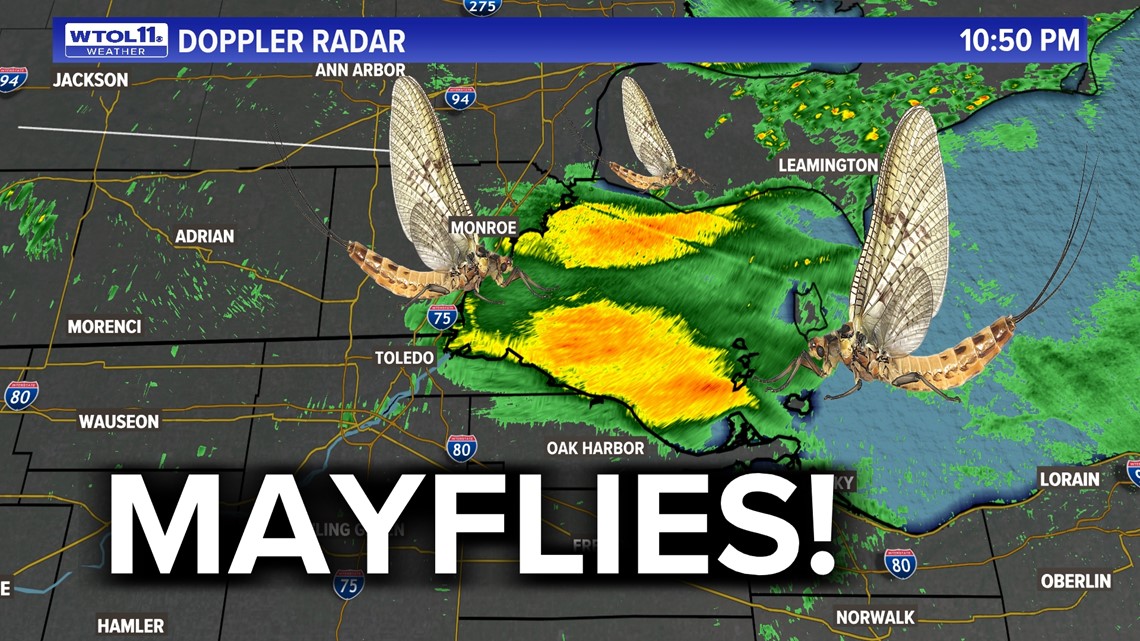
MORE LOCAL HEADLINES FROM WTOL 11

